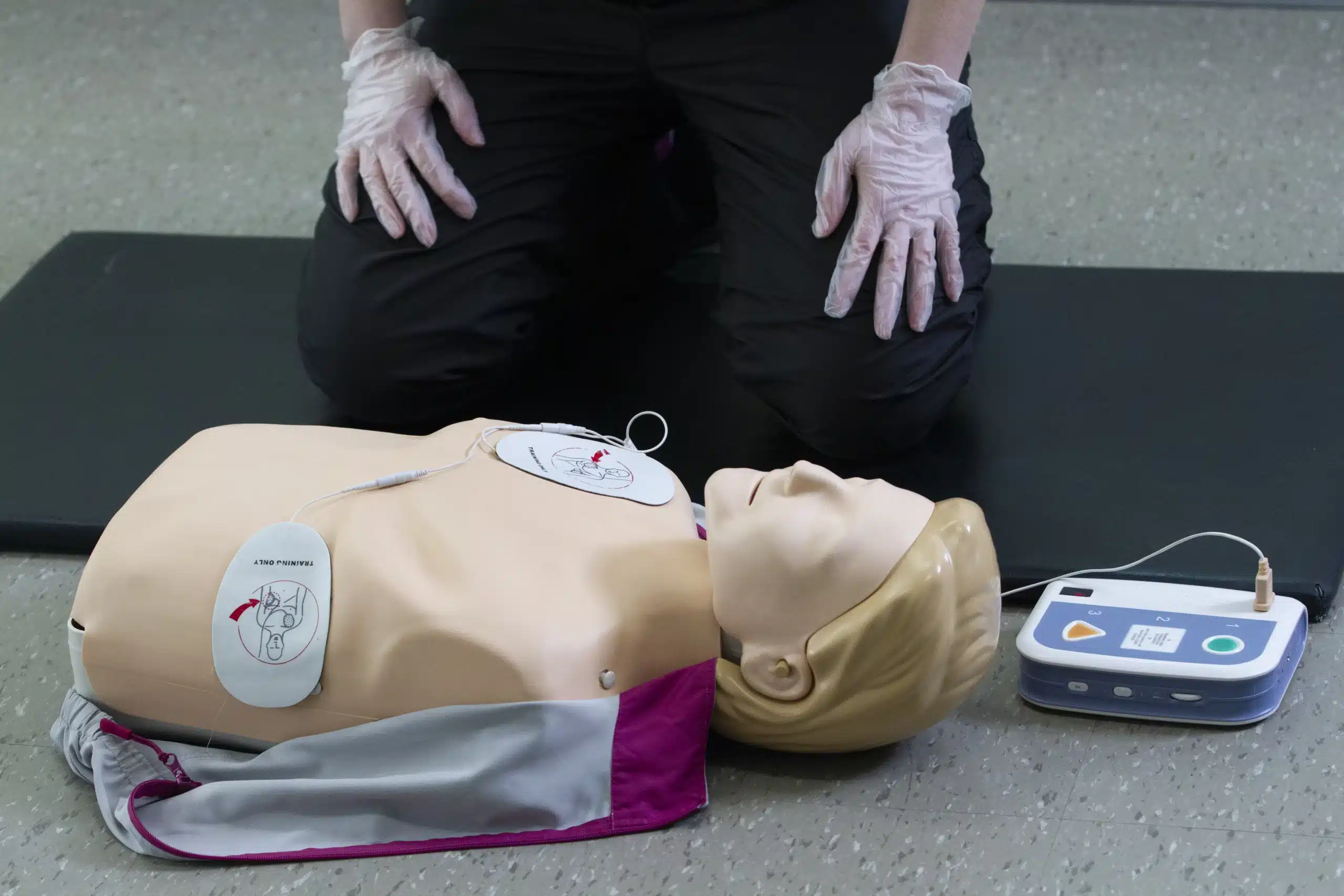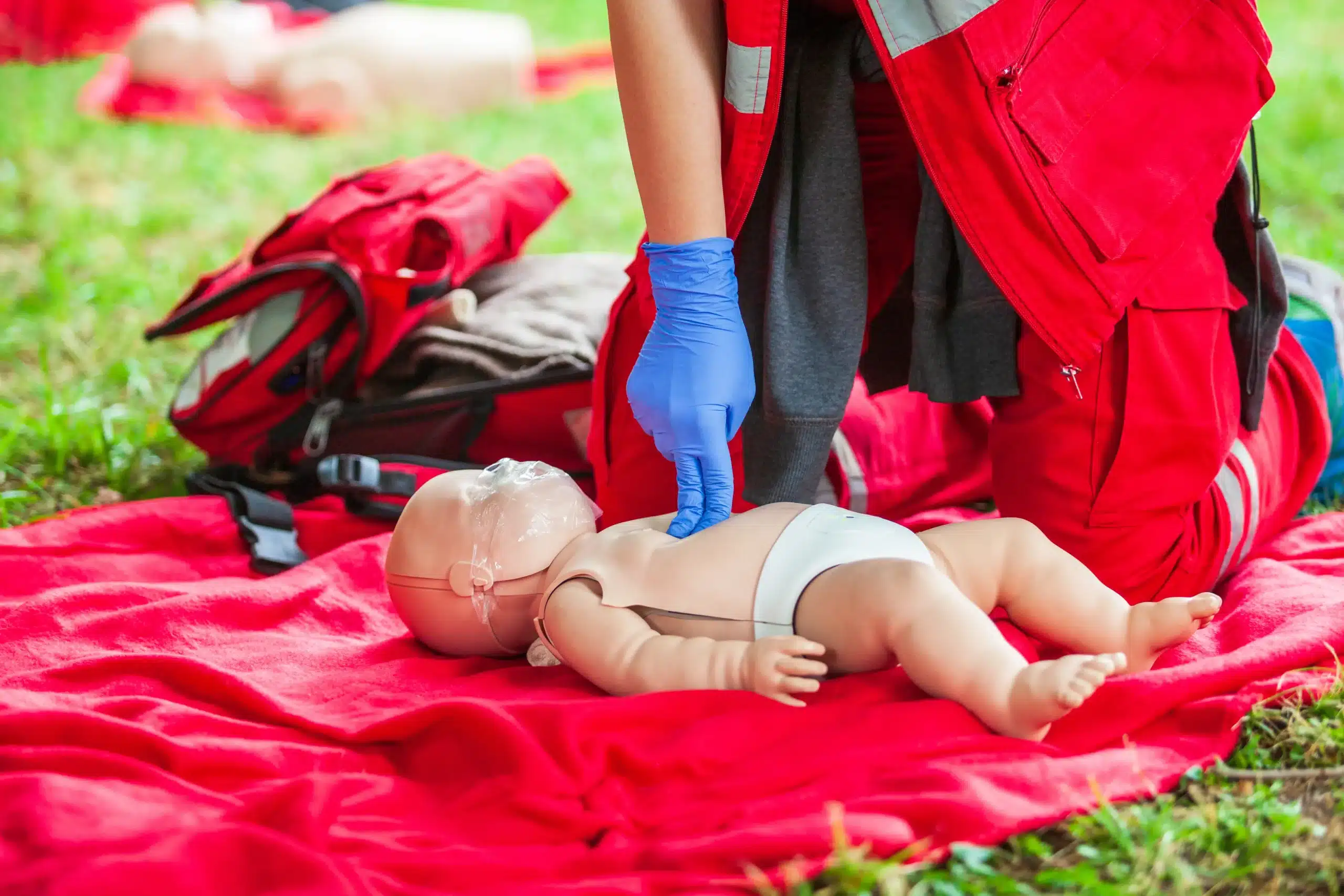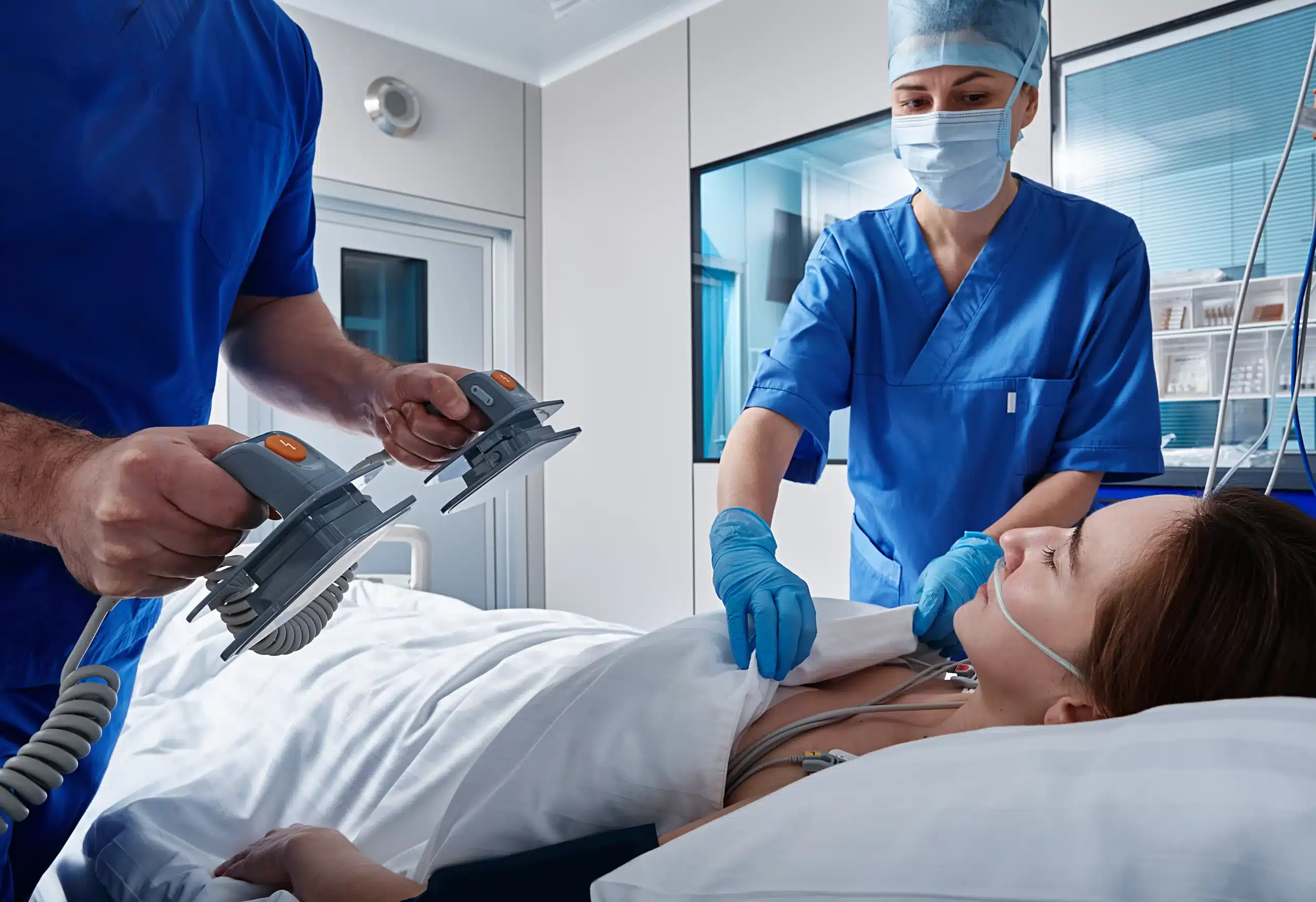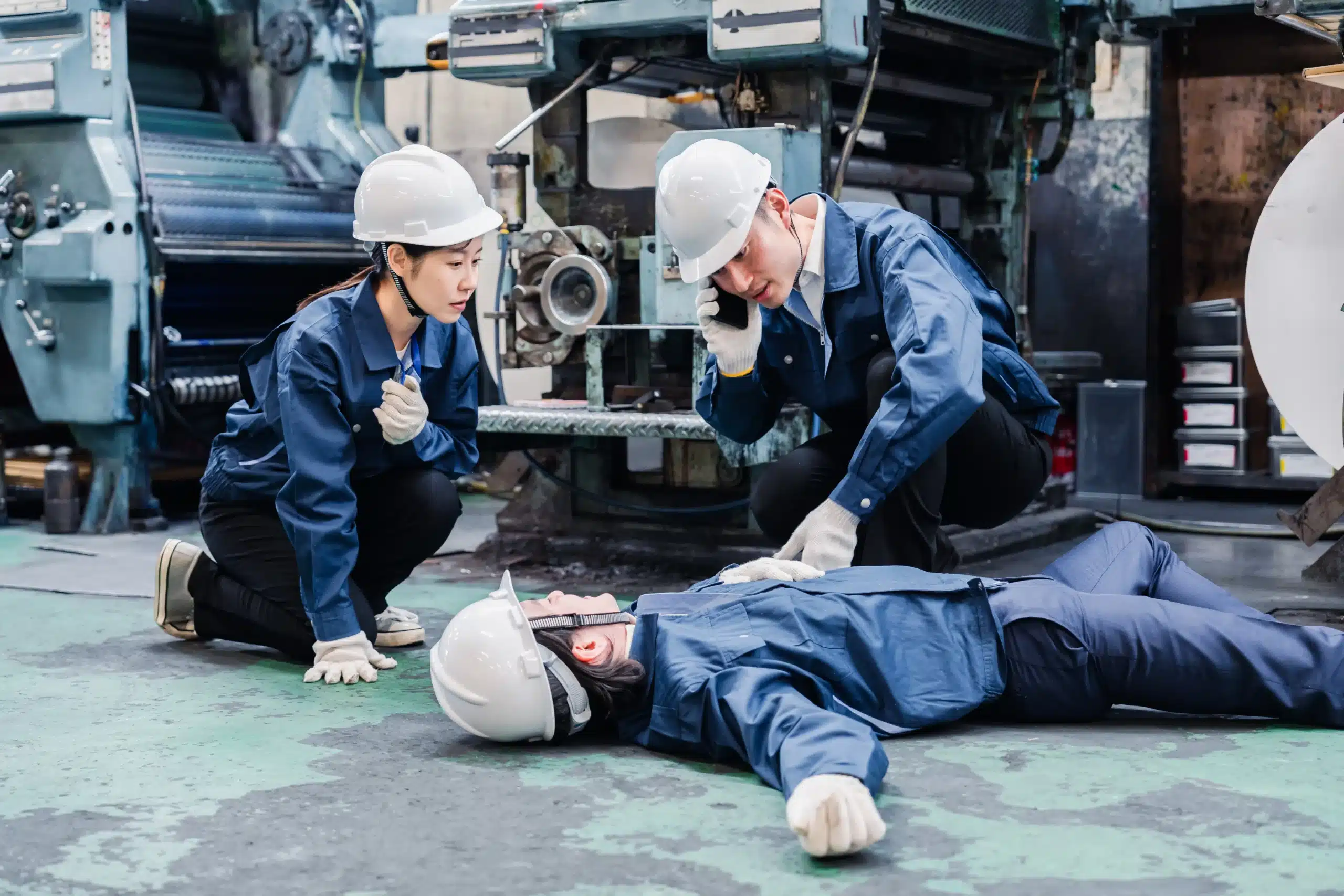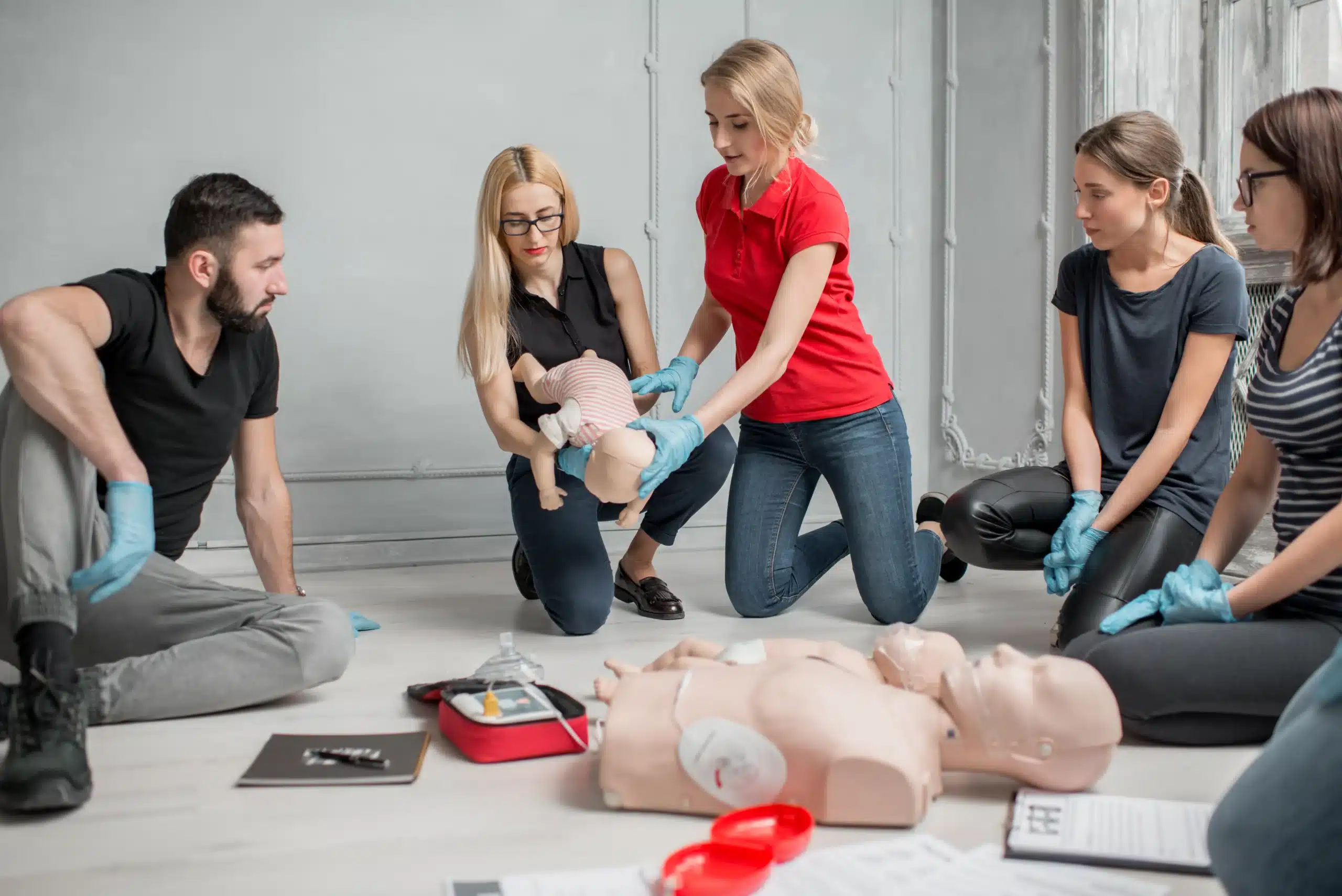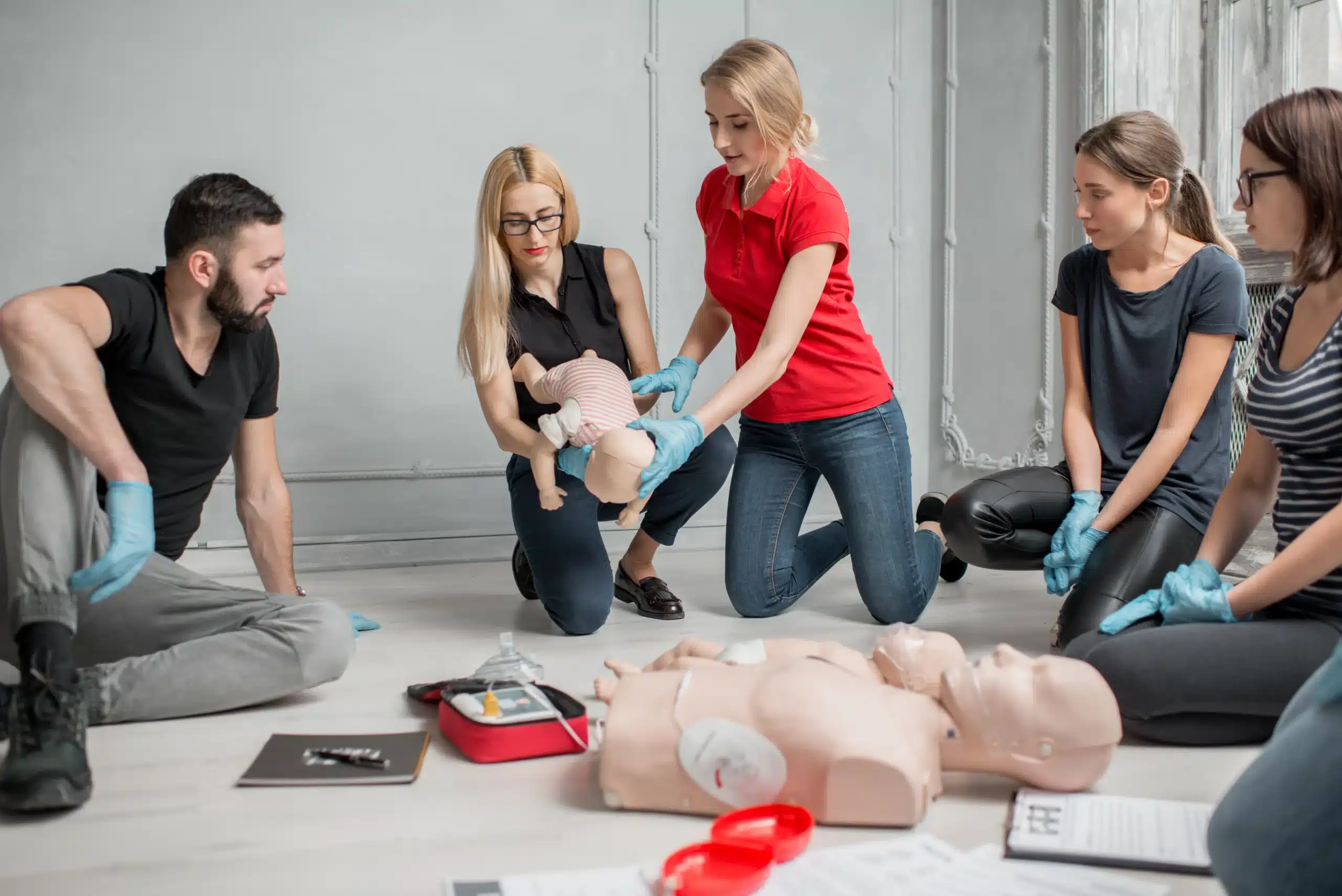Life throws curveballs. Knowing how to respond in a medical emergency can make all the difference. If you’re in Milpitas and searching for a flexible way to learn CPR, online CPR classes in Milpitas might be the perfect fit. These courses blend online learning with in-person skills sessions, giving you the convenience to learn at your own pace and the hands-on experience to build confidence. This comprehensive guide explores the benefits of online CPR training, available courses, certification options, and how to choose the right class for your needs. We’ll also look at reputable providers in Milpitas offering online CPR classes in Milpitas, so you can find the perfect training that fits your schedule and budget.
Key Takeaways
- Online CPR training offers a flexible path to certification: Combining online coursework with in-person skills sessions lets you learn at your own speed and get certified conveniently.
- Select a course that aligns with your needs: Consider factors like the type of certification (BLS, ACLS, PALS, CPR/First Aid), the accrediting organization (AHA or Red Cross), and any employer-specific requirements.
- Stay current with your CPR skills: Renew your certification every two years and explore continuing education options to maintain your skills and knowledge of the latest guidelines.
What are Online CPR Classes in Milpitas?
Online CPR classes in Milpitas offer a blended learning approach, combining online coursework with in-person skills practice. This format lets you learn the theoretical material at your own pace, then demonstrate your skills in a hands-on session. It’s a convenient way for both healthcare providers and the general public to learn these essential, life-saving skills. The online portion typically covers recognizing emergencies, performing CPR on adults, children, and infants, and using an AED. You’ll also learn about choking relief and other first aid basics. After completing the online modules, you’ll schedule an in-person skills session with a certified instructor to practice and be evaluated. This blended format offers flexibility for busy professionals and anyone with a packed schedule. Milpitas CPR Classes offers a variety of courses, including the American Heart Association RQI program, a popular choice for medical professionals seeking BLS, ACLS, and PALS certification. After completing both the online and in-person components, you’ll receive a certification card, typically valid for two years. Learn more about CPR and first aid certification courses offered by Milpitas CPR Classes.
Available Online CPR Courses
We’ve outlined the key online CPR courses available in Milpitas to help you find the right fit. Whether you’re a healthcare provider, a concerned parent, or simply want to be prepared for emergencies, there’s a course for you. These courses blend online learning with in-person skills sessions, offering flexibility and comprehensive training. For more information on all the courses we offer, visit our CPR training page.
Basic Life Support (BLS)
The BLS course provides healthcare professionals with the skills to respond to life-threatening emergencies. It covers core life-saving techniques, including high-quality CPR for adults, children, and infants, along with how to use an AED and relieve choking. The American Heart Association’s RQI program is a popular choice for BLS certification in Milpitas, offering a blended learning approach. This format allows healthcare providers to complete the cognitive portion online at their own pace, followed by a hands-on skills assessment.
First Aid
A First Aid certification course equips you with the skills to manage injuries and medical emergencies until professional help arrives. You’ll learn how to treat common injuries like cuts, burns, and sprains, as well as how to recognize and respond to more serious conditions like heart attacks and strokes. These courses often combine online learning with in-person practice, allowing you to apply your knowledge in a realistic setting. For more information on our First Aid courses, visit our website.
Advanced Cardiovascular Life Support (ACLS)
The ACLS course is designed for healthcare professionals who manage cardiopulmonary arrest and other cardiovascular emergencies. It builds upon the fundamentals of BLS, adding advanced concepts like airway management, pharmacology, and team dynamics. The RQI program offers a convenient way for medical professionals to earn their ACLS certification through a combination of online learning and in-person skills practice. You can find more details about our ACLS courses on our ACLS page.
Pediatric Advanced Life Support (PALS)
PALS focuses on the specialized needs of infants and children in emergency situations. This course teaches healthcare providers how to recognize and manage respiratory distress, shock, and other pediatric emergencies. The RQI program also provides a blended learning option for PALS certification, allowing participants to complete the online portion at their convenience before demonstrating their skills in person. For more information, visit our website.
Online CPR Class Structure and Pricing
Understanding the structure and pricing of online CPR classes helps you choose the best option. Blended learning, combining online coursework with an in-person skills session, is a popular and effective approach. Here’s how it typically works:
Online Theory Component
The first part of a blended learning CPR class happens online. You’ll work through the American Heart Association’s HeartCode program, learning essential CPR principles and techniques. This self-paced portion usually takes one to two hours and costs around $36. It’s a convenient way to learn the theoretical foundations on your own time. For medical professionals seeking streamlined certification, the RQI program offered by Milpitas CPR Classes provides a direct path to BLS, ACLS, and PALS credentials.
In-Person Skills Assessment
After completing the online material, you’ll schedule a brief, in-person skills session. This hands-on component allows you to practice your CPR techniques with a certified instructor. They’ll provide feedback and ensure you can perform CPR correctly. This session typically lasts about an hour and costs around $63. Once you successfully complete the skills assessment, you’ll receive your official American Heart Association certification eCard, valid for two years.
Cost Breakdown for Major Providers
For blended learning CPR courses, the total cost generally runs around $99, combining the online portion ($36) and the in-person skills session ($63). Prices may vary slightly between providers. In-person-only BLS courses may cost around $70, while blended learning is often slightly less. ACLS and PALS certifications through blended learning usually cost around $150 each. Check with specific providers, including Milpitas CPR Classes, for the most current pricing information.
CPR Certification: Recognition and Validity
Understanding the difference between CPR certifications is important, especially if you need the certification for your job. Not all CPR certifications are created equal, and some employers require certification from specific organizations. This section clarifies what to look for in a valid and recognized CPR certification.
American Heart Association (AHA) Certifications
The American Heart Association (AHA) is a leading authority in CPR training and offers a range of certifications, including Basic Life Support (BLS), Advanced Cardiovascular Life Support (ACLS), and Pediatric Advanced Life Support (PALS). These certifications are widely accepted and often preferred by healthcare employers. The AHA also offers the Resuscitation Quality Improvement (RQI) program, a modern approach to maintaining CPR skills for healthcare professionals. Many consider the RQI program a convenient and efficient way to stay up-to-date on the latest resuscitation guidelines. For more information on BLS, ACLS, and RQI, visit the Milpitas CPR Classes website.
Red Cross Certifications
The American Red Cross is another well-respected organization that provides CPR training and certification. While similar to the AHA certifications in teaching life-saving skills, some key differences exist in their course content and approach. It’s helpful to research these differences and choose the certification that best aligns with your needs and career goals. This comparison of AHA and Red Cross programs offers further information.
Workplace Acceptance
Most employers require CPR certification from a recognized organization, with the AHA and Red Cross being the most common. Check with your employer or licensing board to confirm their specific requirements before enrolling in a CPR course. In many healthcare settings, an AHA certification is the standard, while other industries may accept certifications from either organization. Keep in mind that some employers, particularly in healthcare, mandate in-person skills assessments, so a fully online CPR course may not meet their criteria. This article on online CPR class validity offers additional insights. Choosing the right CPR certification ensures you meet workplace standards and have the skills to respond effectively in an emergency.
Online CPR Learning: Pros and Cons
Online CPR certification has become increasingly popular, offering a different approach to traditional classroom learning. But like anything, online learning has its own set of advantages and disadvantages. Let’s weigh the pros and cons to help you decide if online CPR training is right for you.
Flexibility and Convenience
One of the biggest draws of online CPR classes is the flexibility. You can learn at your own pace, fitting modules into your schedule whenever you have time. This is a major advantage for busy professionals, parents, or anyone who finds it difficult to commit to set class times. Online courses also remove the need to travel to a physical location, saving you time and money. The National Center for Education Statistics points out this added convenience compared to traditional in-person training.
Self-Paced Learning
Online CPR training lets you learn at your own speed. If you quickly understand a concept, you can move on. If a topic requires more attention, you can take your time reviewing the material. This personalized approach can be especially helpful for those who prefer a more self-directed learning experience. My CPR Certification Online highlights this benefit, emphasizing the ability to tailor the learning experience to your individual needs.
Cost-Effectiveness
Online CPR courses are often less expensive than in-person classes. Websites like Cheap CPR often offer discounts and promotions, making online certification an appealing option for budget-conscious individuals. While prices vary, the potential cost savings is a definite plus.
Lack of Hands-On Practice
While online courses excel at teaching the theory, they sometimes lack the practical application component. Performing CPR requires physical skills best learned through hands-on practice and feedback from a qualified instructor. Verywell Health emphasizes the importance of hands-on training, noting that online-only courses don’t meet OSHA requirements for workplace CPR certification. This is a key factor, especially if your job requires you to have CPR certification.
Limited Instructor Feedback
In a traditional classroom, you can ask questions, get immediate feedback from an instructor, and learn from others in the class. This interactive element is often missing in online courses. While some online programs offer virtual simulations or video demonstrations, they can’t completely replicate the benefits of a real-time learning environment. The National Center for Education Statistics notes the value of in-person interaction for developing comprehensive CPR skills.
Choosing Your Online CPR Class
Finding the right online CPR class means considering a few key things to ensure the certification works for you and is accepted by your employer. Here’s what to look for:
Accreditation and Recognition
Not all CPR certifications are the same. For broad acceptance, choose a program accredited by a nationally recognized organization. The American Heart Association (AHA) and the American Red Cross are two respected providers of CPR training and offer certifications generally accepted nationwide. Employers, especially in healthcare, often require these specific certifications. Before signing up for a class, double-check its accreditation and that it aligns with your workplace requirements. You can check out AHA-certified courses like BLS or explore the CPR and First-Aid classes offered by Milpitas CPR Classes. While online courses offer flexibility, many certifications still require an in-person skills check.
Course Content and Duration
Online CPR classes vary in content and length. A good curriculum should cover the basics like recognizing medical emergencies, performing CPR on adults, children, and infants, using an AED, and providing first aid. Some courses might also include more specialized modules like PALS (Pediatric Advanced Life Support) or ACLS (Advanced Cardiovascular Life Support), which are helpful for healthcare providers. Think about what you need and pick a course that covers those skills. The RQI program from Milpitas CPR Classes is a popular option for medical professionals looking for a streamlined way to get their BLS, ACLS, and PALS certifications.
Instructor Qualifications
Good instructors make a big difference in how much you learn. Look for online CPR classes taught by certified instructors with solid experience. Qualified instructors can give you accurate information, answer your questions clearly, and offer helpful advice. If your course includes an in-person skills assessment, make sure that instructor is also certified and experienced. A reputable training center, like Milpitas CPR Classes, will always tell you about their instructors’ qualifications so you feel confident about the quality of the training.
Online CPR Class Providers in Milpitas
Finding the right CPR class can feel overwhelming with so many options. To help you decide, let’s look at some of the key CPR training providers in Milpitas.
Milpitas CPR Classes
Milpitas CPR Classes, offered through Safety Training Seminars, a woman-owned AHA Training Center, focuses on high-quality American Heart Association (AHA) courses. They offer BLS, ACLS, PALS, CPR, and First Aid certification courses seven days a week in Milpitas and surrounding cities. This local focus makes them a convenient option for residents of Milpitas, San Jose, and Santa Clara. Learn more about their CPR and First Aid certification. For healthcare professionals seeking a flexible way to maintain their certifications, they also offer the RQI program. Those interested in more advanced training can explore their ACLS and BLS courses.
American Heart Association
While the AHA doesn’t directly offer classes, they set the standards for CPR training. Many organizations, including Milpitas CPR Classes, use their curriculum. The AHA’s Resuscitation Quality Improvement (RQI) program is a popular choice for medical professionals looking to renew their BLS, ACLS, and PALS certifications.
American Red Cross
The American Red Cross is another well-known provider of CPR training. Like the AHA, they offer various courses for everyone from community members to healthcare providers. You can explore their programs and find a class on the American Red Cross website.
Emergency & Health Training Center
The Emergency & Health Training Center provides AHA-certified BLS courses in a blended learning format. This typically involves an online component combined with an in-person skills session. Visit their website for specific course offerings and schedules in Milpitas.
National CPR Foundation
While not a direct provider of classes, the National CPR Foundation offers resources and information about online CPR certification. Their online CPR certification insights can be helpful when considering the validity of these options. They emphasize the flexibility and affordability online training can offer.
Register for an Online CPR Class
Ready to get started with your CPR training? Registering for an online CPR class is straightforward. Here’s a breakdown of the steps and how you can find the best value.
Steps to Enroll
Most online CPR courses follow a blended learning format. This means you’ll complete the coursework online, then schedule an in-person skills session. Here’s what to expect:
-
Choose a provider and course: Select an online CPR class that aligns with your needs and schedule. Milpitas CPR Classes offers a range of AHA-certified courses including BLS, ACLS, PALS, and CPR/First Aid. Make sure the course you choose meets any workplace or regulatory requirements.
-
Complete the online portion: Once you’ve registered, you can typically begin the online modules right away. You’ll work through the course material at your own pace, often including videos, interactive exercises, and quizzes. Be sure to use a computer or tablet, as some online courses aren’t compatible with smartphones. Review course requirements before you begin.
-
Schedule your skills session: After finishing the online component, you’ll need to schedule an in-person skills check with a certified instructor. This hands-on session allows you to demonstrate the techniques you learned online and receive personalized feedback. Contact Milpitas CPR Classes to find available skills sessions in your area.
-
Receive your certification: Once you’ve successfully completed both the online coursework and the skills check, you’ll receive your official CPR certification card. Many providers issue digital eCards immediately, so you’ll have proof of your certification right away.
Current Promotions and Group Discounts
Looking to train a team or group? Check with your chosen provider for potential discounts. Many offer reduced rates for group registrations, making it more affordable to certify multiple people at once. Contact Milpitas CPR Classes directly to inquire about group rates and current promotions for your team. Bundling registrations can often streamline the process and ensure everyone gets certified together.
Maintain Your CPR Certification
CPR and First Aid certifications expire, so staying current with your credentials is essential for responding effectively in emergencies.
Renewal Requirements
Your CPR and First Aid certifications, typically issued by organizations like the American Heart Association and the American Red Cross, are generally valid for two years. To maintain your certification, you’ll need to retake the course and demonstrate your skills before the expiration date. Check your certification card for the specific date and give yourself plenty of time to renew.
Continuing Education Options
Even if your certification isn’t expiring soon, staying informed about the latest CPR guidelines and techniques is important. The American Heart Association‘s RQI program offers medical professionals a convenient way to refresh their BLS, ACLS, and PALS certifications. Online CPR courses provide another flexible option for brushing up on your skills and learning about updated guidelines and best practices between renewals. This ongoing education ensures you’re always prepared to deliver the most effective care.
Online vs. In-Person CPR Classes
Deciding between online and in-person CPR classes depends on your learning style, schedule, and budget. Both formats offer valuable training, but they differ in key areas. Let’s break down the pros and cons of each to help you choose the best fit.
Learning Experience
Online CPR classes offer unmatched flexibility and convenience. You can learn at your own pace, anytime, anywhere, fitting the training around your schedule. This format often involves interactive modules, videos, and quizzes. However, online learning lacks the immediate, personalized feedback you receive in a traditional classroom setting. In-person classes at our Milpitas CPR Classes location, for example, provide hands-on practice with instructors who can correct your technique in real-time and answer your questions directly. This face-to-face interaction can be invaluable for building confidence and mastering the skills. If you learn best through direct interaction and hands-on guidance, an in-person class might be a better fit. For those who thrive in a self-directed environment, online learning offers a convenient alternative.
Skill Retention
Both online and in-person CPR certification courses cover the same core material and lead to valid certifications. The key difference lies in the practice component. In-person classes emphasize hands-on training, allowing you to repeatedly practice techniques on mannequins under the watchful eye of an instructor. This repetitive practice can lead to better skill retention in the long run. While online courses often include videos and simulations, they can’t fully replicate the experience of physical practice. Some studies suggest that hands-on training may enhance skill retention. If you’re concerned about retaining the information and skills long-term, consider the benefits of in-person training.
Time and Cost Considerations
Online CPR classes often win when it comes to time and cost. They typically require a smaller time commitment, allowing you to complete the coursework in a few short hours, spread out over several days if needed. This flexibility is especially beneficial for busy professionals, parents, or anyone with a packed schedule. Online courses also tend to be more budget-friendly. In-person classes, while offering a richer learning experience, often involve travel time, scheduling constraints, and potentially higher costs. Consider your available time and budget when making your decision. If you need a quick, affordable option, an online CPR class might be the right choice. However, if you prioritize a more immersive learning experience and are willing to invest more time and resources, in-person training offers distinct advantages.
Related Articles
- CPR Training in Santa Clara: A Complete Guide – Milpitas CPR Classes
- BLS for Healthcare Providers in Santa Clara: A Guide – Milpitas CPR Classes
- CPR & First-aid Classes in Milpitas, CA – Milpitas CPR Classes
- AHA ACLS Classes in Milpitas, CA – Milpitas CPR Classes
- AHA PALS Classes in Milpitas, CA – Milpitas CPR Classes
Frequently Asked Questions
Is online CPR certification accepted in Milpitas? Yes, online CPR certifications that include an in-person skills assessment are widely accepted in Milpitas and often preferred for their convenience. However, it’s always best to confirm with your employer or licensing board to ensure the certification meets their specific requirements. Many healthcare settings, for example, may prefer certifications from the American Heart Association.
What’s the difference between BLS, ACLS, and PALS? BLS (Basic Life Support) teaches essential life-saving skills, including CPR and AED use, for anyone. ACLS (Advanced Cardiovascular Life Support) is designed for healthcare professionals managing cardiac arrests and other cardiovascular emergencies. PALS (Pediatric Advanced Life Support) focuses on the specific needs of infants and children during emergencies. Milpitas CPR Classes offers all these courses.
How long does it take to get CPR certified online? The online portion of a blended learning CPR course typically takes one to two hours. You’ll then need to schedule a separate in-person skills session, which usually lasts about an hour. So, you can complete the entire process and receive your certification within a few hours, depending on scheduling availability.
How much does an online CPR class cost? The cost of a blended learning CPR class, including both the online portion and the in-person skills session, is typically around $99. Prices can vary slightly depending on the provider and the specific course. Check with Milpitas CPR Classes for the most up-to-date pricing information.
How often do I need to renew my CPR certification? Most CPR certifications are valid for two years. You’ll need to retake the course and pass a skills assessment before your certification expires to maintain your credentials. Staying current with your certification ensures you’re always prepared to respond effectively in an emergency.
